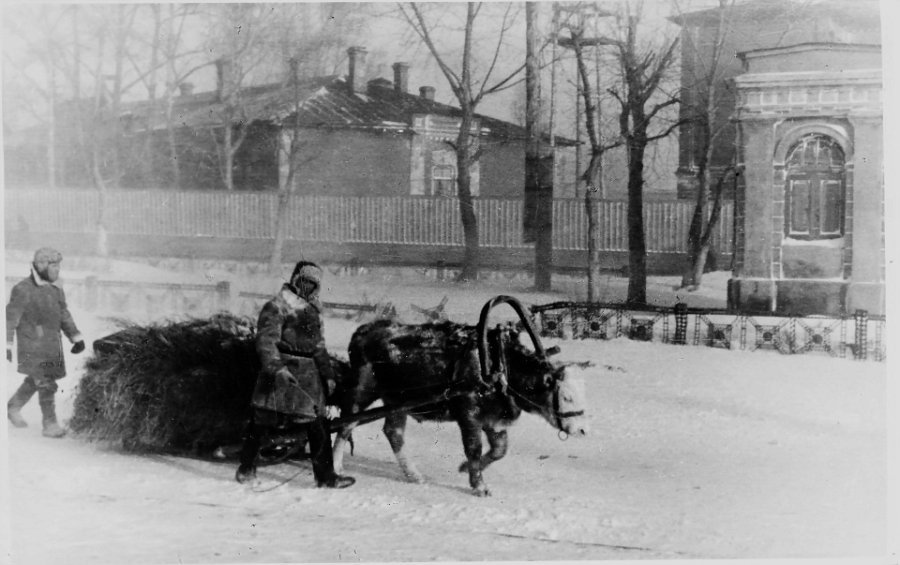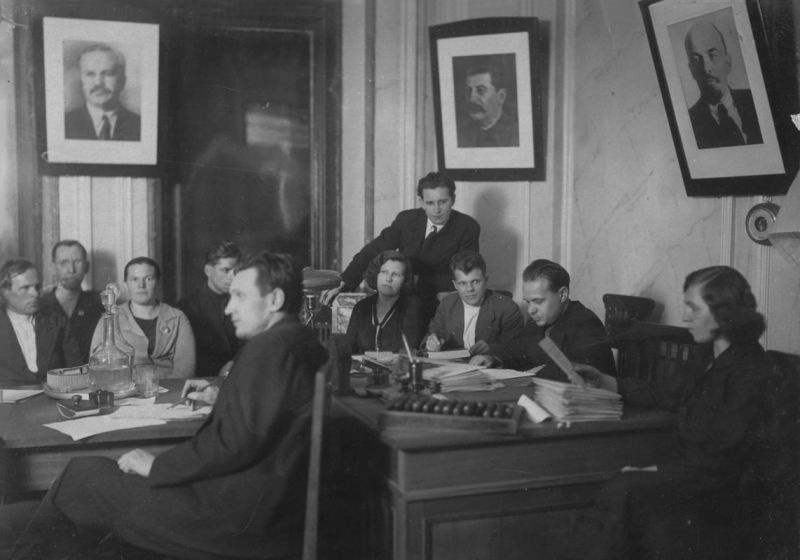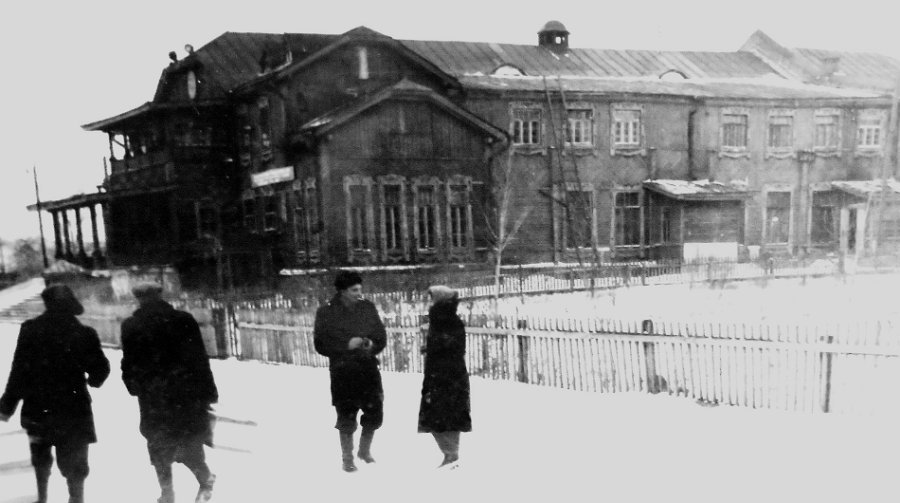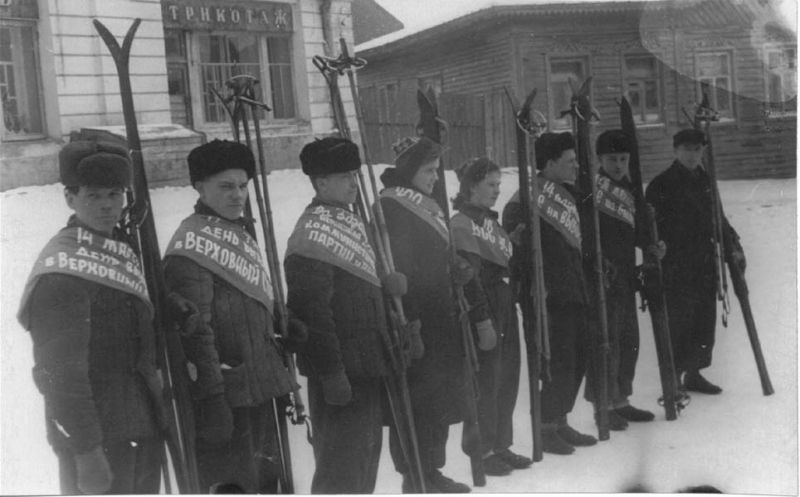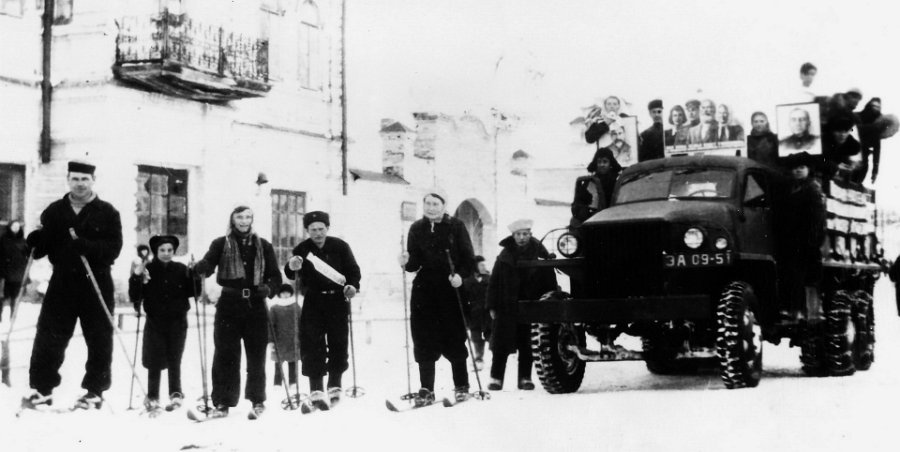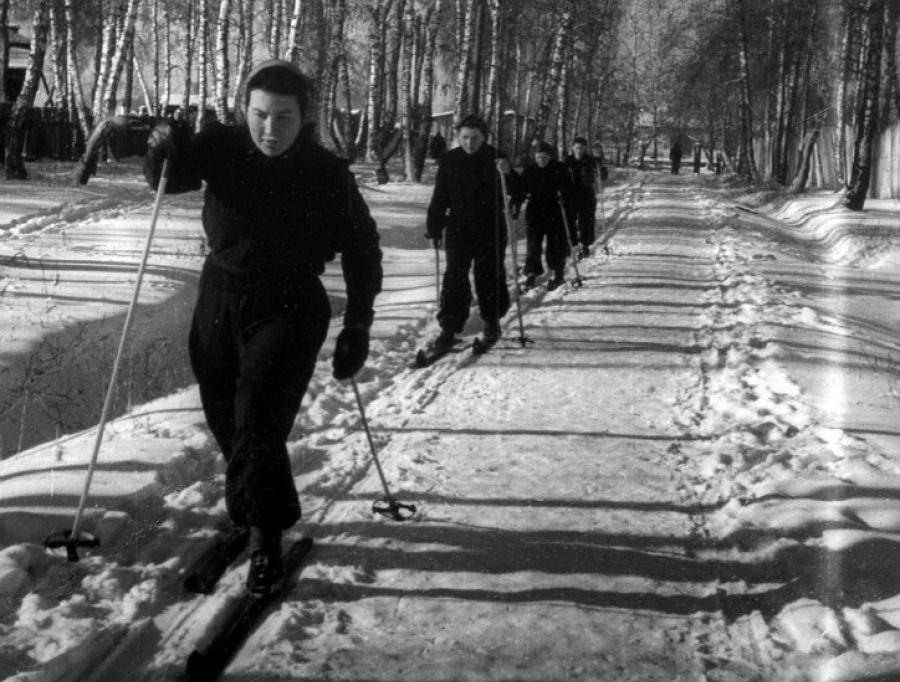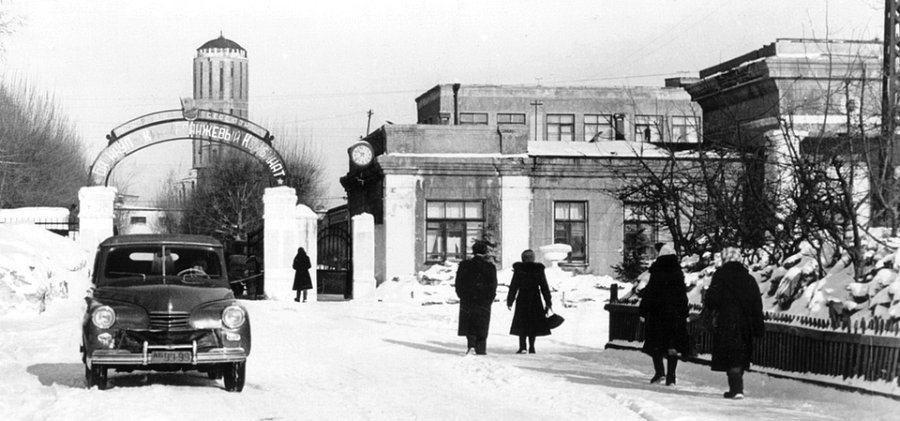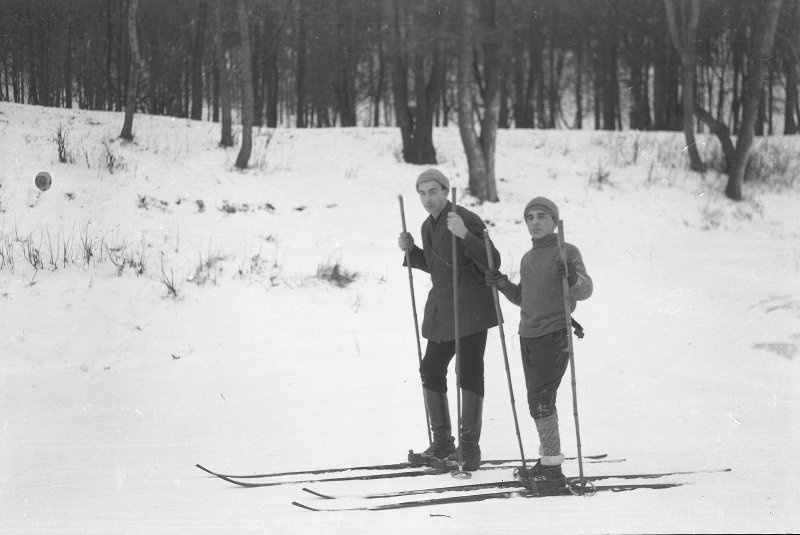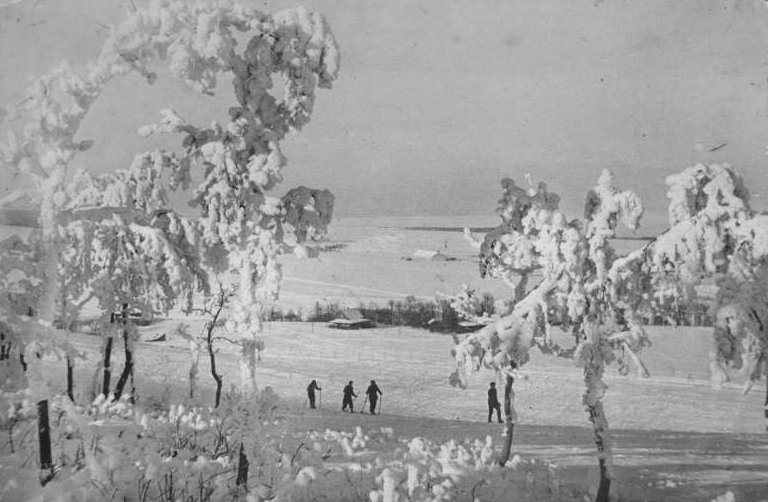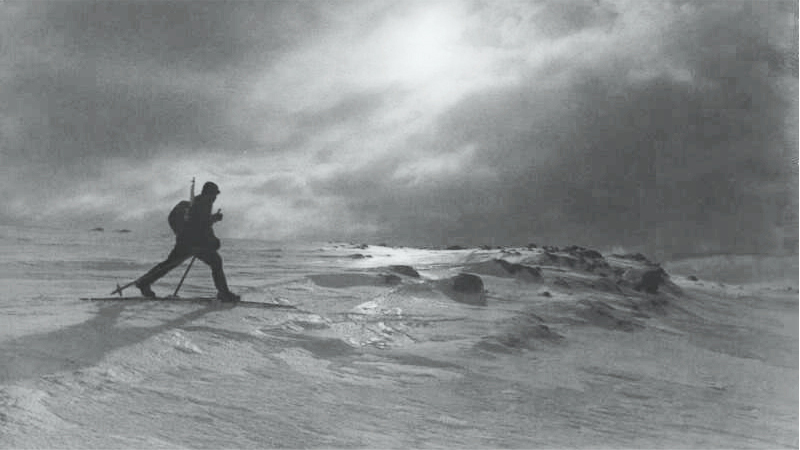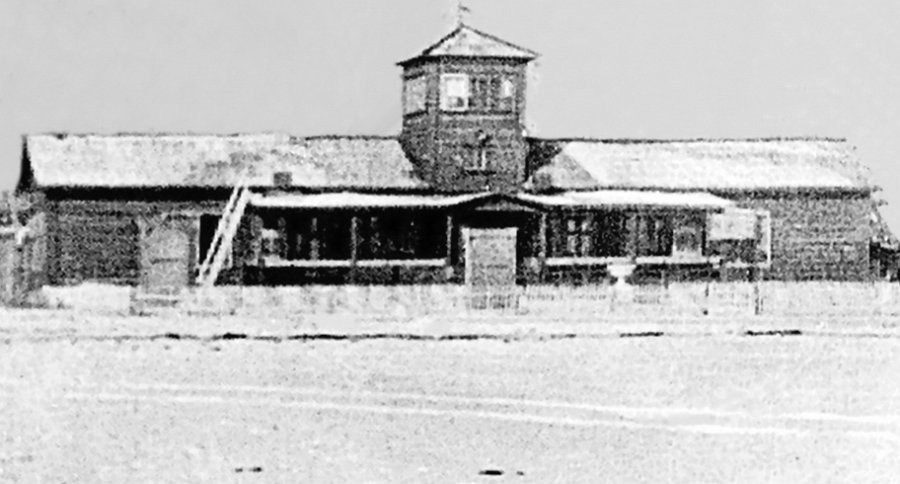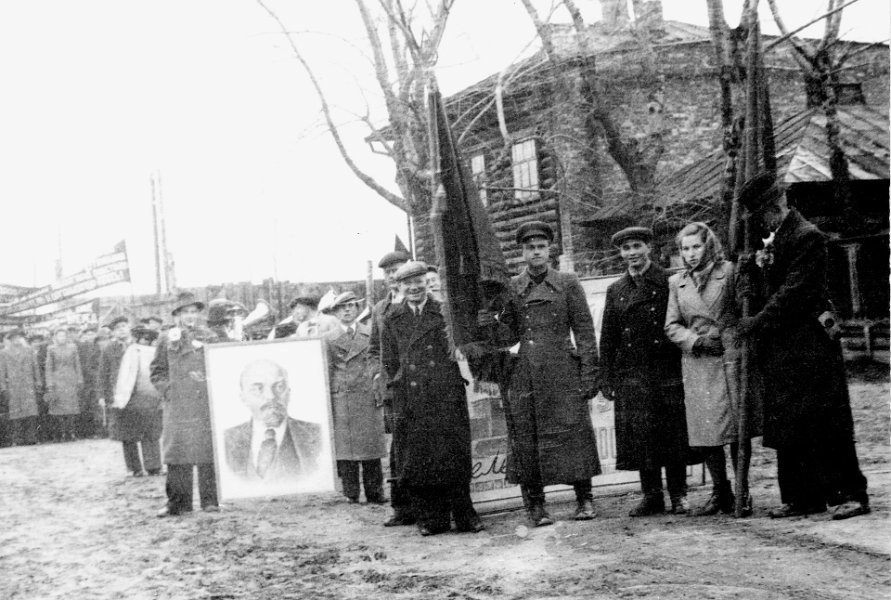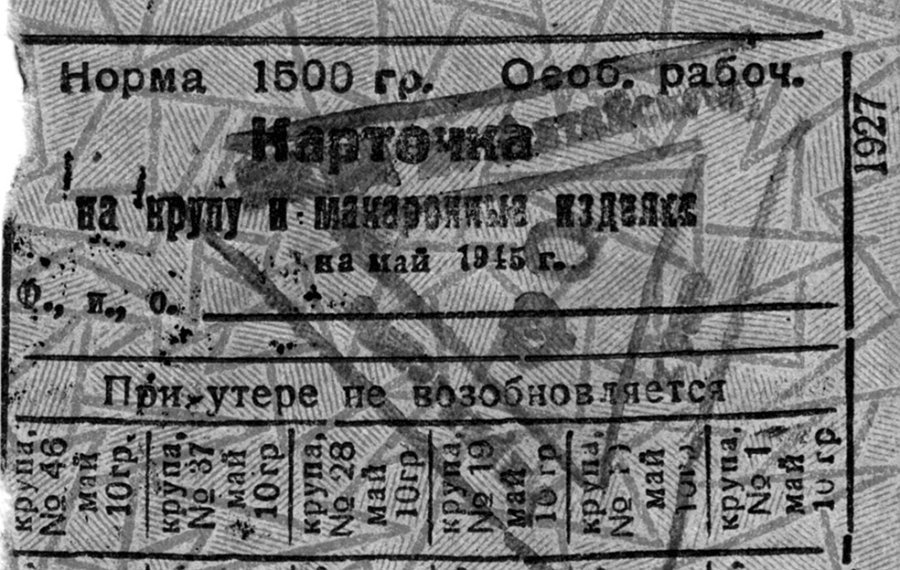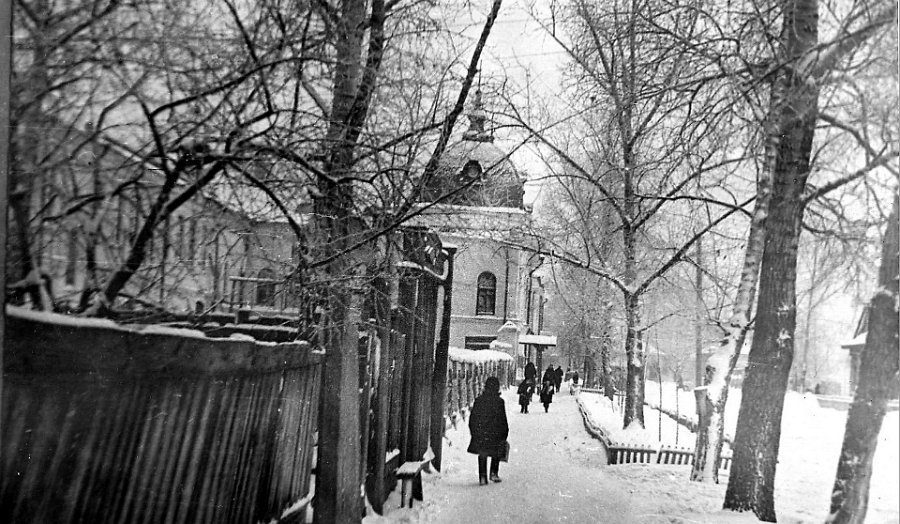
Classified case
The mystery of the death of 10 Barnaul Komsomol skiers in January 1946
All rights reserved Altayskaya Pravda
On January 28-29, 10 corpses were found in the area of the Pavlovsky tract.
This is how the indictment begins in the case of the death of a group of Komsomol skiers in the vicinity of Barnaul in 1946. From the park of the mélange plant, they had to walk to the village of Novomikhaylovka. But they froze to death where beautiful shops and tall buildings now stand. This case was immediately classified, and the secret of their death remained unsolved for a long time.
Silent funeral
At the end of January 1946, rumors spread around Barnaul, one more terrible than the other, the journalist Vladimir Ulko described this story in the early 1990s (namely, he dug it out and met with the two surviving participants in the trek). But only a few knew about what actually happened.
The bodies of the dead were taken from the city morgue to the cemetery on different days and at different times. They were allowed to take them home only for a couple of hours so that loved ones could say goodbye. And then only those who lived below Papanintsev St.
The authorities classified the death of 10 Komsomol members for a reason - according to Ulko, they were afraid of excesses in the city center on the eve of a nationwide, as they said, triumph: elections to the Supreme Soviet of the USSR. And they were about to take place on February 10.
- 2 -
Under the sun of the Constitution
The elections were then the main event after the Victory in the great war - at least that is how they were presented by the authorities. And it's clear why. The world, so long-awaited, did not bring relief: there is still a 12-hour working day in the country side, there is a shortage of everything and ration cards. And we need a common event that will inspire the worn out people to new labor exploits.
In 1946, in Barnaul, as elsewhere in the country, goods were released with ration cards (vouchers).
Klavdia Poylova, the former director of the Altayskaya Pravda publishing house, recalls: "With a worker's ration card one could buy 500 grams of bread a day, and 400 if you were not a member. There was a coupon for half a liter of vodka. We went to the market and exchanged the bottle for a homemade loaf of bread."
In the meantime, the PR support of the elections is going through the roof. The press tirelessly writes about candidates from the Stalinist bloc of communists and non-party people. Tells about the "patriotism of young people who grew up under the sun of the Stalinist Constitution". About the "Stakhanov watch" on the occasion of the Red date (ed. note - over-fulfillment of the production plans in the run-up to the milestone date).
Even a team of women who dug up a train stuck on snow-covered tracks on the night of January 28 with wooden shovels told the journalist: "This is our present for the elections."
The death of the Komsomol members of the Barnaul Mélange Combine (BMC), in which the authorities showed themselves not on their best side, did not fit into this scenario... This is what happened.
Historical context
In January 1946, the Barnaul City Party Committee demanded that the Committee for Physical Culture and Sports and six voluntary sports societies of the city (they existed at enterprises) develop a plan of agitation pre-election events with the participation of athletes.
This plan was worked out. And the military department of the city committee, which was also responsible for propaganda and patriotic education, approved it.
From the document it followed: from January 15 to February 1, the sports communities should organize a ski conquest (and not only ski conquest) in different territories. The sports community of the mélange plant "Red Banner" has planned an agitation run to Novomikhaylovka.
- 3 -
These events usually took place in the following manner: an agitator from Barnaul reads a report to voters. And the Komsomol athletes provide the artistic part: they sing songs, act out scenes, make wall newspapers.
The plan was undeniably binding. But the release dates of the groups were not indicated in it, so they could start, in general, at any time before February 1.
On January 25, not the textile workers were the first to embark on the agitation hike - it was a group of nine of the city's best skiers heading for Oirot-Tura (present-day Gorno-Altaisk). Simultaneously with them, five motorcyclists left for Kamen, also a propaganda team and also consisting of the best athletes. They were seen off in accordance with all the rules of the genre: an orchestra played on Svoboda (Victory) Square, despite the frost, and important officials spoke at the rally.
The athletes were prepared very carefully for the transition. Motorcyclists, for example, were dressed in special winter suits, equipment was supplied with everything necessary in case of any difficulties, even skis.
With the textile workers group that was next, from the first steps everything went wrong.
Glitch in the program
The leader of the agitation transitions and runs in Barnaul was 29-year-old Tamara Zarzhitskaya, the chairman of the committee for physical culture and sports of the city. It was responsible to take the instructions from above, related the plan approved by the city committee to the sports community, and had to issue the order before sending the group.
Of course, she knew that the melangists were planning to start on January 27th. After all, on the 24th, at a meeting of instructors, Zhenya Tsilinskaya, an instructor of the sports community of the BMC "Red Banner", told her about it, and on the 26th, the future team captain Vladimir Semyonov also told her.
Zarzhitskaya even instructed them on how to prepare for the race. But! She did not agree on the exit of the textile workers and did not sign the order. Perhaps because Semyonov did not give her the mileage plan and route for approval, although this was his direct responsibility.
And yet the skiers set off on the run.
- 4 -
Encrusted in ice
A few months later, at the trial, Zarzhitskaya will admit the fault for loosing control over the group, but she never imagined that the textile workers would go on their way without permission.
However, the prosecutor believed that these formal references did not absolve her of guilt - she had to make sure that everything was going well.
Meanwhile, on January 27, Zarzhitskaya did not show up in the committee, although it was a working day. Moreover, she did not give instructions to the officer on duty and, accordingly, did not cancel the hike, although the weather in Barnaul and the surrounding area sharply deteriorated by the 27th.
"It’s impossible to go in this weather, the snow is blinding the eyes, the wind is leaving you breathless", "ice crusts freeze on my eyebrows" - this is how Altayskaya Pravda wrote about the weather in those days.
Lifting the spirits
January 27, 10 am. Frost minus 16, wind force 16-24 meters per second. The group starts from the stadium "Red Banner" (now "Klevchenya") in the BMC park (now "Izumrudny") and first, probably, moves through the park, where the ski track continues, to the exit.
There are twelve skiers - five girls and seven men, very young, almost all of them about 20 years old.
The oldest is Nikolay Mihaylov, an experienced athlete who went through the war in a ski battalion. He and Lyuda Ogorodnikova are the only two that will survive from the entire ski team...
Along with them in a car are traveling an agitator, deputy secretary of the Komsomol committee of the BMC Galina Semendyaeva, and the driver. They will also survive the ordeal. The support car there are warm clothes and food from the workers' supply department in order for the skiers to move light.
On ski trips in those years, the athletes wore sweaters, a light jacket on top, often quilted with cotton wool, says Klavdia Poylova.
Didn't give up on the idea
The task for the skiers is difficult, but for the trained athletes it is feasible: to reach Novomikhaylovka (18 km), to campaign and return on their own.
Now think about it: three out of 12 participants in the hike have never stood on skis, four were sick (!). This was stated by witnesses at the trial. Therefore, the group was aware of this, and the team captain Semyonov, too, probably understood this. Or soon I realized.
The big question is why didn't the skiers themselves give up the idea or postpone to another day?
- 5 -
Win at all costs
At the trial, Nikolay Mihaylov and Lyudmila Ogorodnikova will say that no one was forced to participate. Maybe at that difficult time they were counting on an extra ration? Or did they want to replace the 12-hour watch at the plant with a more or less easy, as they initially hoped, adventure?
Another explanation is given by the old-timer of Barnaul Klavdiya Poylova. She did not know about this story in those years, but she remembers the atmosphere of that time perfectly.
"They knew it would be difficult. But they wanted to prove that they can do anything. I judge by my brother (the famous historian Pyotr Borodkin). This was the attitude of all, mainly young people," said Klavdiya Poylova, former director of the Altayskaya Pravda publishing house.
But the eagerness for victory turned out to be not enough.
Fateful decision
When the group got to the Pavlovsky tract, Captain Semyonov and instructor Tsilinskaya make a fatal decision: to leave the main road and get to the edge of the forest, where the wind is not so strong, and then move along the treeline.
Pine trees were then, most likely, a little closer to the road than they are now, but it is still several kilometers from the "pavlik" (short of Pavlovskiy tract). At the same time, the supply with warm clothes and food continued to move along the main road.
It turned out that the group was walking against the icy wind, turning into a hurricane, in light clothes and without food supplies. The captain of the group will later greatly regret this decision.
Meanwhile, the wind near the pine forest is really not so painful. But on the other hand, the snow is looser, and trampling the track takes energy. Somehow skiers made their way to Kueta - a village of an agricultural colony near the pine forest (the original name of KUITU: regional department of correctional labor institutions).
They took a break. By this time, 18-year-old Oleg Malyutin was cramping and he was not the only one who had problems. Semyonov urged everyone who is not feeling well to return. No one did.
The group went out again and, according to Ulko, and got out onto the main road. The wind had intensified. The skiers started noticing the first frostbites. They wrapped posters around their whitened faces, writes Vladimir Ulko. There is a paradox: they carry agitation posters but no individual supply of food or a first-aid kit with them.
Meanwhile, with every hundred meters, the skiers are getting weaker and weaker. And, worst of all, they stop understanding where to go next.
- 6 -
Collapsed without strength
It was only 4 kilometers to the target - much less than it was covered. But the group, alas, did not know this. Pavlovsky tract and the territory along it - at that time, an almost deserted place. Steppe - this is how this area will be called in the materials of the criminal case.
Fully exhausted, eight of the 12 guys took off their skis and huddled around a telegraph pole, hoping to get a little warmth.
At that time, Dmitry Zemlyakov, another front-line soldier in the group, was generally incapacitated because some old war wounds opened.
Lyudmila Ogorodnikova hoarsely begs them to put on their skis and go, keep moving. All in vain!
Then the three strongest - Nikolay Mihaylov, Vladimir Semyonov and Pavel Gilev - decided to go in the opposite direction to get to the airport (it was then located on the left side of the Pavlovsky tract).
Gilev remembered that as member of the flying club he had seen a snowmobile in one of the buildings. They leave at about 17.00 and follow the wires between the electrical poles.
Gilev was the first to collapse. After some time, the captain of the team, Semyonov, stopped at a polo. And when Mihaylov got to the airport, it turned out that the snowmobile was disassembled. But - oh, hurrah! - the phone is working.
"Please, call later"
17:45
Mihaylov calls the BMC dispatcher and asks for help: the group's situation is catastrophic, he explains.
17.50
The dispatcher calls the deputy director of the plant, Mihail Bityukov, and gives him the words of Mihaylov. But he ... refuses to listen and asks her to call back later!
18.00
Mihaylov himself calls Bityukov and personally begs for emergency assistance to the dying children. Bityukov is in no hurry (he only says, together with the pilots, to light the signal fires), he is playing for time, although every second is precious.
Did he have any reason for this other than callousness? We do not know this. We only know that people were at the plant - it was even a Sunday, but it was a working day. So he had someone to send in search. And there was someone to consult with: both the director and the chairmen of the party committee and trade union committee were present at the plant.
20.00
Bityukov finally sends help - but only two cars. There is a very small chance to find a dozen children scattered in the steppe, possibly already covered with snow. It is mentioned only in passing in the materials of the court: allegedly two cars were all that the deputy director had at his disposal. Who knows if this is true?
- 7 -
At the trial, one of the witnesses will say: Bityukov refused to send a tractor to rescue the skiers, although Mihaylov asked for it.
Vladimir Ulko, who personally spoke with Mihaylov in the 1990s, writes that the tractor was sent out but it broke down on the way out of the city. Which is not surprising since clearly the drivers were drunk.
"Go alone, Lyuda"
Meanwhile, Lyudmila Ogorodnikova hurries to get help by another road. On the way, she meets Pavel Gilev (he could no longer walk and speak), and then Oleg Malyutin.
The latter, as it turned out, got to Kueta, warmed up a little, refreshed himself and returned to his own. Lyudmila took him with her, but on the way he fell behind again. As it turned out, forever.
From the article by Vladimir Ulko "Tragic transition", "Free course" dated January 25, 1996: The last of Ogorodnikov's group was Semyonov. He could have walked well, but he stayed at the telegraph pole. "Go, Lyuda, alone," he whispered. - They will judge me. And I already condemned myself. "
By about 19.00, Ogorodnikova somehow managed to get to the building of the Barnaul machine-tractor station (in the 1990s, there was a motor depot here). The watchman helped her to contact the BMC dispatcher, who replied that everyone knew about the situation.
The skier sat in the cold room of the station until the morning, from there her colleagues textile workers took her away. She returned home severely frostbitten, and if it were not for the Novosibirsk medical professor, she would have been left without legs.
- 8 -
Found and dug up
Meanwhile, neither two cars, nor even a detachment of mounted militia (the militia was probably notified by Bityukov) could find the airport - a landmark for finding the frozen skiers.
At one o'clock in the morning, the management of the plant stopped the search. Although some of the participants in the hike were alive until 7-8 in the morning on January 28, as the medical examination later testified.
From a private inquest of the Altai Regional Court: Active organization of searches using all the forces of the city throughout the night could be effective.
Could ... The bodies of six men and four girls were found only on January 28-29. Nikolay Mihaylov, together with the director of the department of workers' supply, Terehin, went on horseback and dug out Pasha Gilev only on the morning of the 29th. The rest, according to Ulko, were found by cadets of the mortar school.
It's nobody's fault
After the death of the skiers, Zarzhitskaya and Bityukov were arrested, an investigation began, and soon a trial, which was held closed to the public.
The investigator believed that both of them were guilty of criminal negligence. But the first court already acquitted Zarzhitskaya - without consenting to the group's departure, she could not imagine that the guys would hit the road.
Bityukov was found guilty in part, he was punished with six months of corrective labor ... at the workplace with a 25% deduction from his salary. Both were released from custody after the first trial in March 1946.
And other instances of Bityukov were completely acquitted. Its functions did not include helping skiers who went on a run not on business, and neglect and sluggishness should not be regarded as negligence.
And it is unlikely that the exhausted skiers themselves could have signal their position, even if he had sent the cars two hours earlier - a whole detachment of mounted police could not find them...
From the verdict in the case of the dead Barnaul skiers:
"Failure to fulfill his duty to provide assistance to a person in a life-threatening condition may entail moral and social condemnation, but not criminal liability... Bityukov showed insufficient sensitivity in helping dying skiers, but he cannot be held criminally liable."
By the end of 1947, the proceedings reached the Supreme Court of the USSR, but no one answered for the death of 10 young people...
What do we know about the life of Barnaul in 1946
Where was the airfield?
Many native Barnaul residents still remember that the old airport in Barnaul was located in the area of the current streets of Baltiyskaya, Vzlyotnaya, Lazurnaya. But there was almost no passenger traffic in the 1940s.
The airport building was one-story and wooden (as Klavdiya Poylova recalls, there were “several booths”), behind the airfield there were arable lands where potatoes were planted.
In memory of the aviators of Barnaul, an L-39 aircraft was installed in the area of the old airport. The modern airport on the other side of the Pavlovsky tract was commissioned in 1967.
How did people endure difficulties?
It is characteristic that people did not complain, the difficulties make you stronger, says Klavdiya Poylova. "There were no complaints, there was no time for this," she continues. And in fact - there still isn't: many still work in factories for 12 hours, working on weekends is a common thing.
The war is over, but its laws are still in effect. For example, when on January 27, 1946, the Barnaul City Executive Committee mobilized the entire working population to clear snow drifts on the railroad, he pointed out that those who refused would face criminal liability by a 1942 resolution of the Council of People's Commissars.
How did they wear?
It was difficult to buy both clothes and fabric to sew, recalls Klavdiya Poylova. Once a chintz was brought to the store - people were queuing up at five in the morning.
Shoes were also in short supply. Here is a report on the situation at "StroyGAZ" (newspaper) dating back to a slightly earlier time (August 1945): a large number of young workers go to the workshops barefoot - there is nothing to put on.
Those who have distinguished themselves in production or in sports are awarded with rubber galoshes, or a piece of fabric. And people were happy about it. "My brother received a prize for a successful ski run in Oirot-Turu - a piece of fabric. He made the first suit in his life from it," continues Klavdiya Antonovna.
What was Barnaul like?
In 1946, Barnaul ended somewhere in the area of October Square. Where today the technical university was, there was a Dunkina grove, recalls Klavdiya Poylova. The northern border of the city reached a railway excavation near the modern New Market. Wooden houses still stood on the central avenues.
The city did not yet have a House under the spire (it was built in 1953), Lenin Avenue was not paved. The construction of tram tracks was only started in 1946, the tram itself was launched only in 1948.
You can discuss this topic on Dyatlov Pass Forum.


